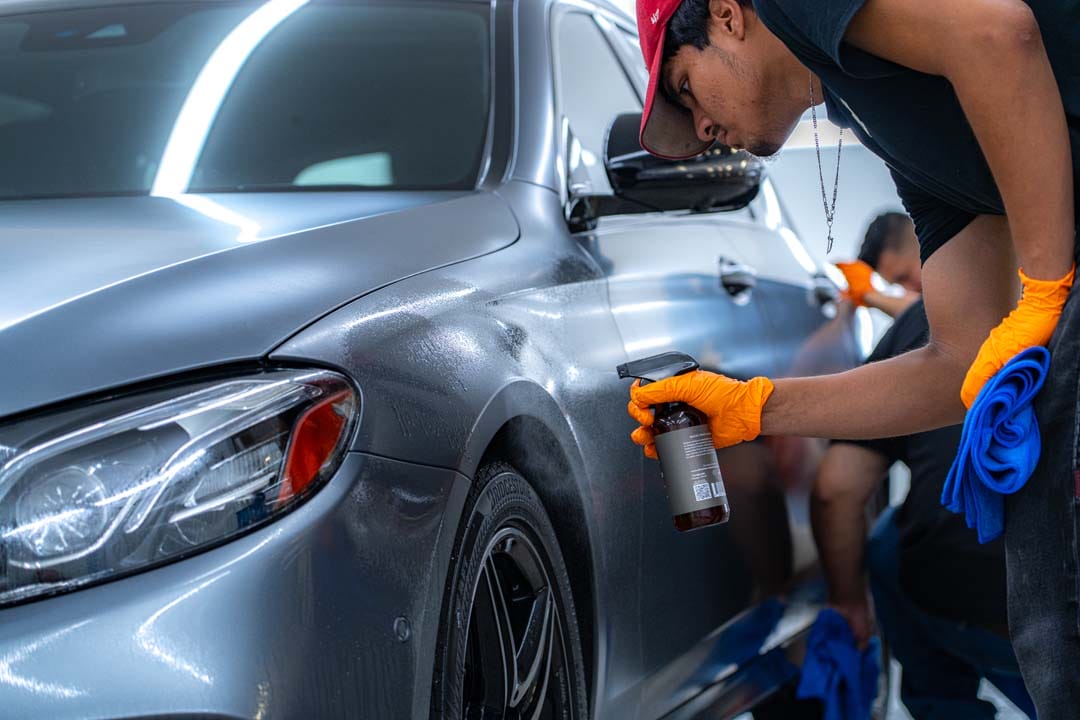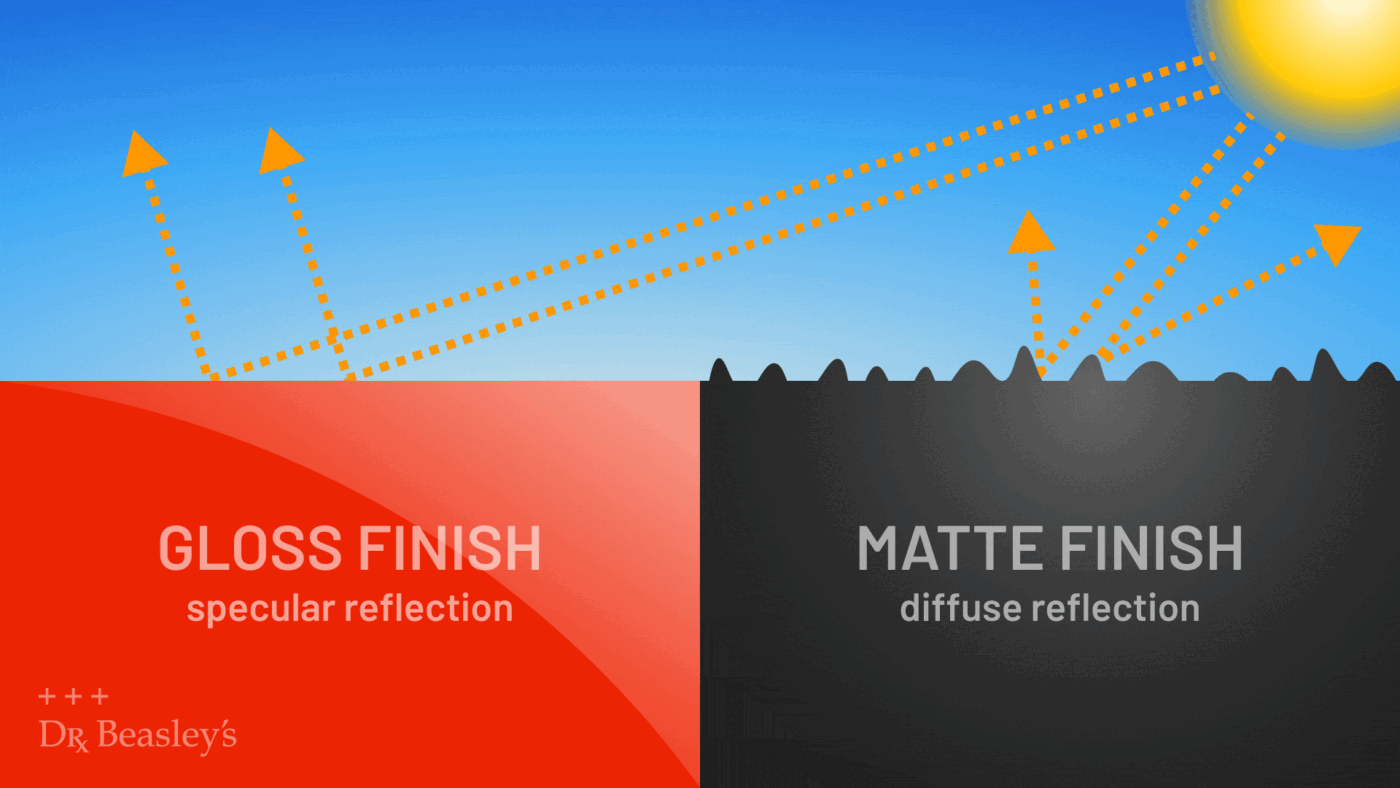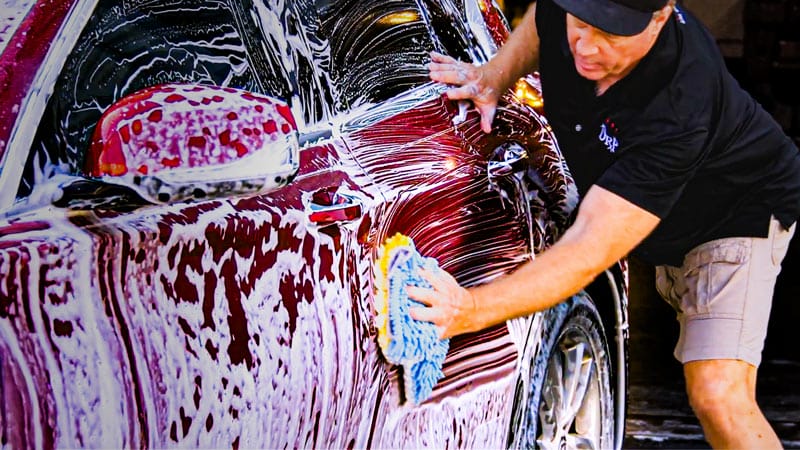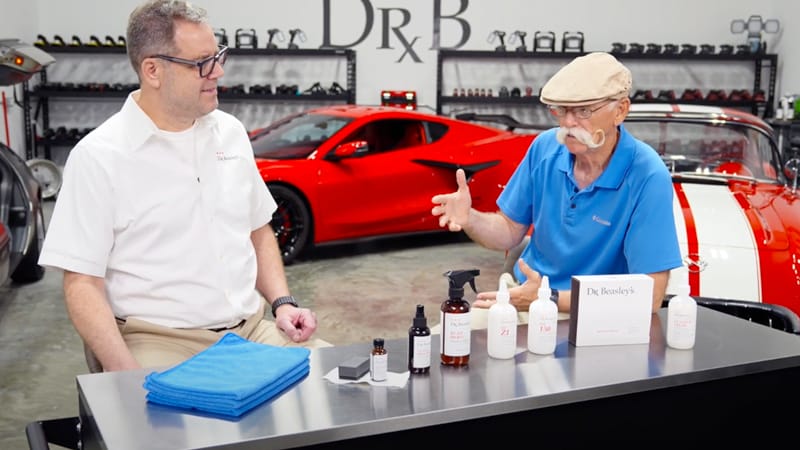Last Updated October 25, 2024
When it comes to describing matte finish paint on cars, there are two terms commonly used: “flat” and “satin”.
What do these terms refer to when discussing matte finishes? What’s the difference between flat and satin matte paint? Do they require different types of care? We’ll explain it all here.
Are “Matte” and “Satin” Different Terms?
The words “matte” and “satin”, when used to describe the reflectivity of a paint’s surface, mean different things:
- Matte: Refers to a type of paint that has a “flat”, non-reflective surface. Matte finishes diffuse light rather than reflecting it, creating a muted, soft appearance.
- Satin: Refers to a paint finish that falls between matte and glossy. It has a soft, smooth sheen, offering a slight reflection of light without being overly shiny. Satin finishes are often described as having a velvety appearance, providing a more polished look than matte but less reflective than full gloss.
That being said, “matte” is often used to describe any automotive paint finish that’s less reflective than semi-gloss. So for the purposes of discussing car paint, “matte” can refer to both satin and totally matte finishes.

What’s the Difference Between “Flat” and “Satin” Paint?
When people describe car paint with a matte finish as “flat” as opposed to “satin,” they are emphasizing the complete absence of shine or gloss in the matte finish. Here’s the key difference:
- Flat (Matte) Finish: A matte or “flat” finish reflects almost no light, giving the car a non-reflective, muted appearance. It creates a soft, understated look where the texture of the car’s surface is more prominent. In contrast to satin, matte finishes have a velvety or chalky quality, making the car look more rugged or modern. “Flat” refers to the lack of depth and luster in the paint, meaning there’s little to no light reflection.
- Satin Finish: Satin finishes, on the other hand, have a subtle sheen or glow. While they don’t have the high gloss of fully reflective paint, they do reflect some light, giving the car a smoother, slightly shiny appearance. Satin finishes provide a more balanced look, combining a hint of gloss with the subtlety of matte, making the surface appear more polished than “flat” matte finishes.
In essence, describing a matte finish as “flat” highlights the complete lack of gloss, while satin retains a soft shine that creates a less muted appearance.
Do “Flat” and “Satin” Paint Require Different Care?
“Flat” and “satin” matte finish paints require similar types of care because both finishes need to be kept in their original appearance with no gloss added in order to look their best.
Both “flat” and satin finishes get their matte appearance due to their textured clear coat that diffuses light by scattering its rays as opposed to reflecting them directly into your eye.

Regular car soaps, waxes, and polishes will add unwanted shine by filling or sanding down the texture, creating a smooth surface that produces a more glossy reflection.
So whether you have a totally flat or slightly satin matte finish, you’re going to want to use products that contain no silicone, wax or oil and therefore maintain the original appearance with no gloss added.
When it comes to how you care for these paints, there’s absolutely zero difference between “flat”, matte and satin.





I love the (grey) satin matte paint on my 2013 smart fortwo. The paint is actually metallic so in direct sunlight it has a bit of “sparkle” to it, but otherwise looks decidedly un-glossy. And I have to agree, matte paint is a breeze to care for. No swirl marks…need I say more?!
In my mind matte isn’t just a gorgeous choice… it’s a “smart” one, too!
There’s optional metallic in both matte and satin, which is very nice. The non-glossy non-reflective shine look of satin sure is nice. Shine and glow rather than reflections. It makes the design cues stand out, but not all cars look good with it.
We have a 2023 Hyundai Ioniq 5 limited with a beautiful matte gray Shooting Star (T5R) finish. Hyundai included a Dr Beasley’s matte finish care care kit including a wash bucket, wash pads, bucket insert to filter dirt, and a nice box of Dr Beasley’s Detailing Products. Your training videos and periodic e-mails have been very helpful in teaching the proper ways to care for the matte finish. I did coat the finish with the Mate Paint Coating last year, and probably should apply some more this year. I’ll be ordering some more Matte Body Wash and towels soon. I have a question about repairing scratches in the finish:
A month or so ago, I accidentally knocked a small bucket of window washing tools off an overhead storage rack, sadly right above the right hand door of the Ioniq 5. This resulted in two small scratches on the door panel just below the window. They are less than 1/2″ long, and appear to have scratch into the base coat since I see kind of a white layer exposed. No dent or other marring. What would be the best way to try and fix those two scratches, or should I just forget it and chalk it up to a bad day and a stupid place to store stuff that can damage the car below? Thanks, Ben
To be honest Ben, I don’t think there’s an easy, nor fool-proof way to fix even tiny scratches like these in matte paint. I could be wrong, but my guess is, trying to fix these to make them look less noticeable will be analogous to turning a Mole Hill into a Mountain.
Mike Phillips
At my age, the Matte finish is not only a great looking choice, but a smart choice. I used to spend hours washing then waxing my cars almost every week, now, thanks to KIA, I have found the matte finish that is so easy to take care of. I had an EV6 with a matte finish and now I have a Sportage with a matte finish and I am so thankful. I will never do a satin finish again. No matte finish? Then I will look elsewhere. The only problem is that I can only find a matte finish cleaner at Dr. Beasley.
Thanks for sharing your perspective on matte finish cars Ted.
As to your comment,
“The only problem is that I can only find a matte finish cleaner at Dr. Beasley.”
What else are you looking for?
Mike Phillips
I bought a car care product that says not to use on Flat, Matte or satin finish. How can we be sure whether or car paint is neither of these ?
Hi Ray,
Normally you can visually identify matte, flat and satin finishes by looking at the paint. Glossy paint is just that, it has a glossy, smooth shiny appearance. Matte, flat and satin are completely different, they look dull with no gloss, shine or reflectivity.
You also might be able to look at the owner’s manual or contact the dealership where you purchased the car and ask this question or even drive to the closest dealership and check with their sales staff.
Mike Phillips